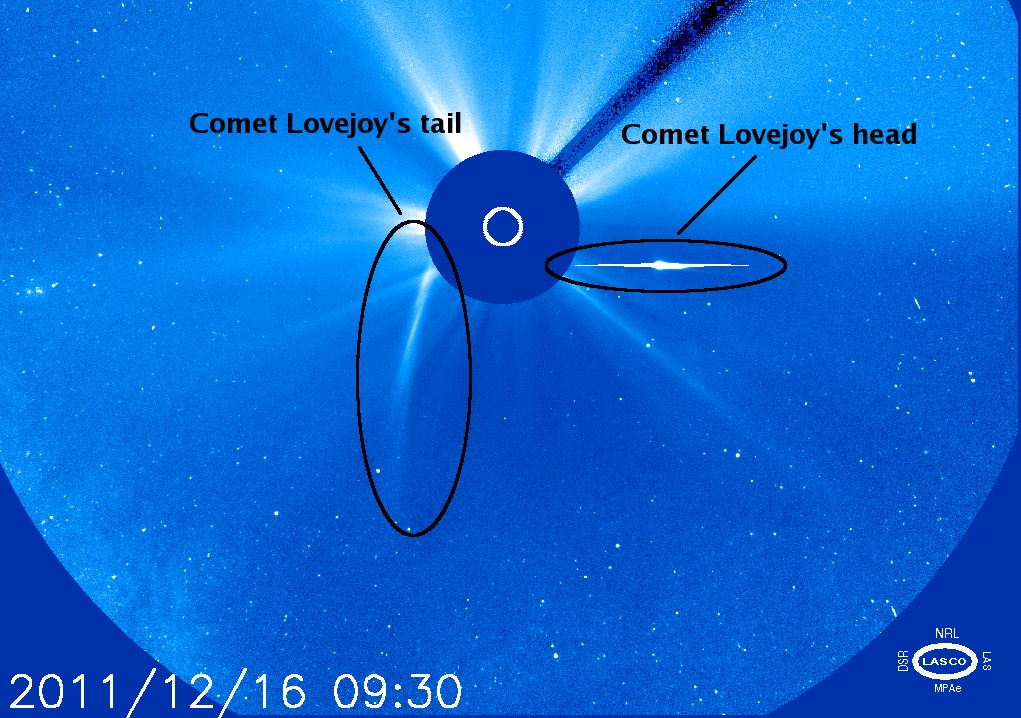It's the morning after for the sungrazing Comet Lovejoy, and this feisty comet has scientists shaking their heads in disbelief. "I don't know where to begin," wrote Karl Battams, from the Naval Research Laboratory, who curates the
Sun-grazing comets webpage
. "What an extraordinary 24hrs! I suppose the first thing to say is this: I was wrong. Wrong, wrong, wrong. And I have never been so happy to be wrong!"
Many experts were predicting Comet Lovejoy would not survive perihelion, where it came within about 120,000 km from the Sun. But some extraordinary videos by NASA's Solar Dynamics Observatory showed the comet entering and then surprisingly exiting the Sun's atmosphere. Battams said he envisioned that if the comet survived at all, what would be left would be just a very diffuse component that would endure maybe a few hours after its close encounter with the Sun. But somehow it survived, even after enduring the several million-degree solar corona for nearly an hour. However, Comet Lovejoy appears to have lost its tail, as you can see in the image below.
[/caption]
The comet is now in the view of other spacecraft, which will continue monitoring the object. It will likely grow a "new" tail as outgassing of dust, gas and debris will continue. It is not known yet how much of Comet Lovejoy's core remains -- which was 200 meters in diameter earlier this week -- or how long it will continue to stay together after its close brush with the Sun.
But we'll keep you posted!
See more videos of Lovejoy's survival below:
 Universe Today
Universe Today
